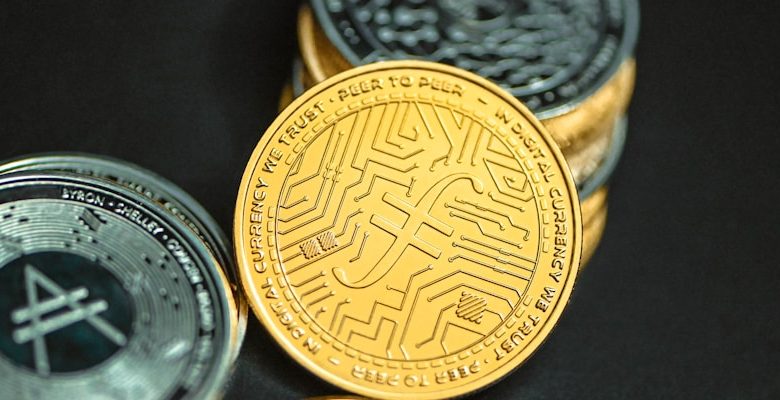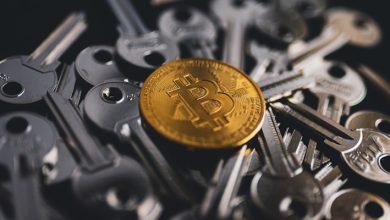How New Tokens Are Shaping the NFT Landscape

- Exploring the rise of new tokens in the NFT market
- Understanding the impact of innovative tokens on NFTs
- The role of new tokens in shaping the future of NFTs
- Key tokens to watch in the evolving NFT landscape
- Challenges and opportunities with emerging NFT tokens
- Diversifying your NFT portfolio with new token offerings
Exploring the rise of new tokens in the NFT market
The NFT market is experiencing a surge in the rise of new tokens, which are reshaping the landscape of digital assets. These new tokens are offering unique opportunities for creators and collectors alike, providing a platform for the exchange of digital art, collectibles, and other assets. The increased availability of these tokens has led to a diversification of the NFT market, with a wide range of projects and platforms emerging to cater to different needs and interests.
One of the key drivers behind the rise of new tokens in the NFT market is the growing interest in blockchain technology and decentralized finance. These technologies are enabling the creation of new token standards and protocols that offer increased functionality and security for NFT transactions. As a result, creators and collectors are able to explore new avenues for creating, buying, and selling digital assets, opening up new possibilities for the future of the NFT market.
Another factor contributing to the rise of new tokens in the NFT market is the increasing demand for unique and exclusive digital assets. Collectors are seeking out rare and one-of-a-kind NFTs, driving up the value and popularity of these tokens. As a result, creators are developing new tokens that cater to this demand, offering innovative features and designs that set them apart from traditional NFTs.
Overall, the rise of new tokens in the NFT market is reshaping the way we think about digital ownership and creativity. With a focus on innovation, security, and exclusivity, these tokens are paving the way for a new era of digital assets that offer endless possibilities for creators and collectors alike.
Understanding the impact of innovative tokens on NFTs
Innovative tokens have been making a significant impact on the NFT landscape, revolutionizing the way digital assets are bought, sold, and traded. These new tokens bring unique functionalities and features to non-fungible tokens, enhancing their value and utility for both creators and collectors alike.
One of the key ways in which innovative tokens are shaping the NFT space is by introducing new ways to engage with digital assets. By leveraging blockchain technology, these tokens enable creators to embed additional information, such as metadata, royalties, and licensing rights, directly into their NFTs. This added layer of transparency and control not only benefits creators by protecting their intellectual property but also provides collectors with valuable insights into the provenance and authenticity of the digital assets they are purchasing.
Moreover, innovative tokens are also driving the development of new business models within the NFT ecosystem. For example, some tokens are designed to act as governance tokens, allowing holders to participate in the decision-making processes of NFT platforms and marketplaces. Others serve as utility tokens, granting access to exclusive content, events, or services within the NFT community. These diverse token functionalities create new opportunities for monetization and incentivization, fostering a more dynamic and sustainable NFT economy.
Furthermore, innovative tokens are playing a crucial role in enhancing the interoperability and compatibility of NFTs across different platforms and marketplaces. Through token standards like ERC-721 and ERC-1155, creators can mint NFTs that are compatible with a wide range of wallets, exchanges, and decentralized applications (dApps). This interoperability not only increases the liquidity and accessibility of NFTs but also encourages collaboration and innovation within the broader blockchain ecosystem.
Overall, the impact of innovative tokens on NFTs is undeniable, reshaping the digital asset landscape and unlocking new possibilities for creators, collectors, and investors. By embracing these tokens and their transformative capabilities, the NFT community can continue to evolve and thrive in an increasingly decentralized and interconnected world.
The role of new tokens in shaping the future of NFTs
New tokens play a crucial role in shaping the future of NFTs by introducing innovative ways to interact with digital assets. These tokens are built on blockchain technology, enabling unique features and functionalities that enhance the overall NFT experience.
One of the key advantages of new tokens in the NFT landscape is the ability to provide more flexibility and customization for creators and collectors. By creating their tokens, users can tailor their NFTs to suit their specific needs and preferences, opening up a world of possibilities for unique and personalized digital assets.
Furthermore, new tokens can also introduce novel ways to generate value and monetize NFTs. Through mechanisms such as staking, yield farming, and governance, token holders can actively participate in the growth and development of the NFT ecosystem, creating new avenues for earning rewards and incentives.
Additionally, new tokens can help address some of the scalability and interoperability challenges facing the NFT space. By leveraging different token standards and protocols, developers can create cross-chain NFTs that can seamlessly interact with various blockchain networks, increasing accessibility and usability for users.
In conclusion, the emergence of new tokens is revolutionizing the NFT landscape, offering exciting possibilities for creators, collectors, and investors alike. These tokens are driving innovation, fostering creativity, and shaping the future of digital ownership in ways that were previously unimaginable.
Key tokens to watch in the evolving NFT landscape
When it comes to navigating the rapidly changing landscape of NFTs, keeping an eye on key tokens is essential. These tokens play a crucial role in shaping the direction of the market and can provide valuable insights into emerging trends. By monitoring these tokens, investors and collectors can stay ahead of the curve and make informed decisions about their NFT portfolios.
Some of the key tokens to watch in the evolving NFT landscape include Ethereum (ETH), which remains the dominant blockchain for NFTs due to its established infrastructure and widespread adoption. Additionally, Solana (SOL) has been gaining momentum as a popular alternative to Ethereum, offering faster transaction speeds and lower fees. Binance Coin (BNB) is another token worth monitoring, as the Binance Smart Chain has become a hub for NFT activity.
Other tokens to keep an eye on include Flow (FLOW), the blockchain behind popular NFT marketplace NBA Top Shot, and Tezos (XTZ), which has been making strides in the NFT space with its focus on sustainability and scalability. By staying informed about these key tokens and their respective ecosystems, stakeholders can stay informed about the latest developments and opportunities in the NFT market.
Challenges and opportunities with emerging NFT tokens
As the world of non-fungible tokens (NFTs) continues to evolve, there are both challenges and opportunities that come with the emergence of new tokens. These digital assets have the potential to revolutionize the way we buy, sell, and trade unique items in the digital realm.
One of the challenges of emerging NFT tokens is the issue of scalability. As more and more NFTs are created, the Ethereum network, which is currently the most popular platform for NFTs, is facing congestion and high gas fees. This can make it difficult for smaller creators to participate in the NFT market.
Another challenge is the lack of regulation in the NFT space. This can lead to issues such as copyright infringement, fraud, and disputes over ownership rights. It is essential for the industry to establish clear guidelines and regulations to protect both creators and buyers in the NFT market.
Despite these challenges, there are also many opportunities that come with emerging NFT tokens. One of the main opportunities is the ability for creators to tokenize their work and reach a global audience without the need for intermediaries. This can open up new revenue streams for artists, musicians, and other creators.
Additionally, the rise of new blockchain platforms specifically designed for NFTs, such as Flow and Tezos, offer alternative solutions to some of the scalability issues faced by Ethereum. These platforms provide faster transaction times and lower fees, making it easier for creators to mint and sell their NFTs.
Diversifying your NFT portfolio with new token offerings
One effective strategy for expanding and strengthening your NFT portfolio is to diversify it with new token offerings. By adding a variety of tokens to your collection, you can spread out your investment risk and potentially increase your overall returns.
When considering new token offerings to add to your portfolio, it’s important to research each token carefully to understand its unique value proposition and potential for growth. Look for tokens that are backed by reputable projects or have a strong community of supporters behind them.
By diversifying your NFT portfolio with new token offerings, you can take advantage of emerging trends in the NFT landscape and position yourself for success in the long term. Keep an eye on new token launches and be prepared to act quickly to secure the tokens that align with your investment goals.



